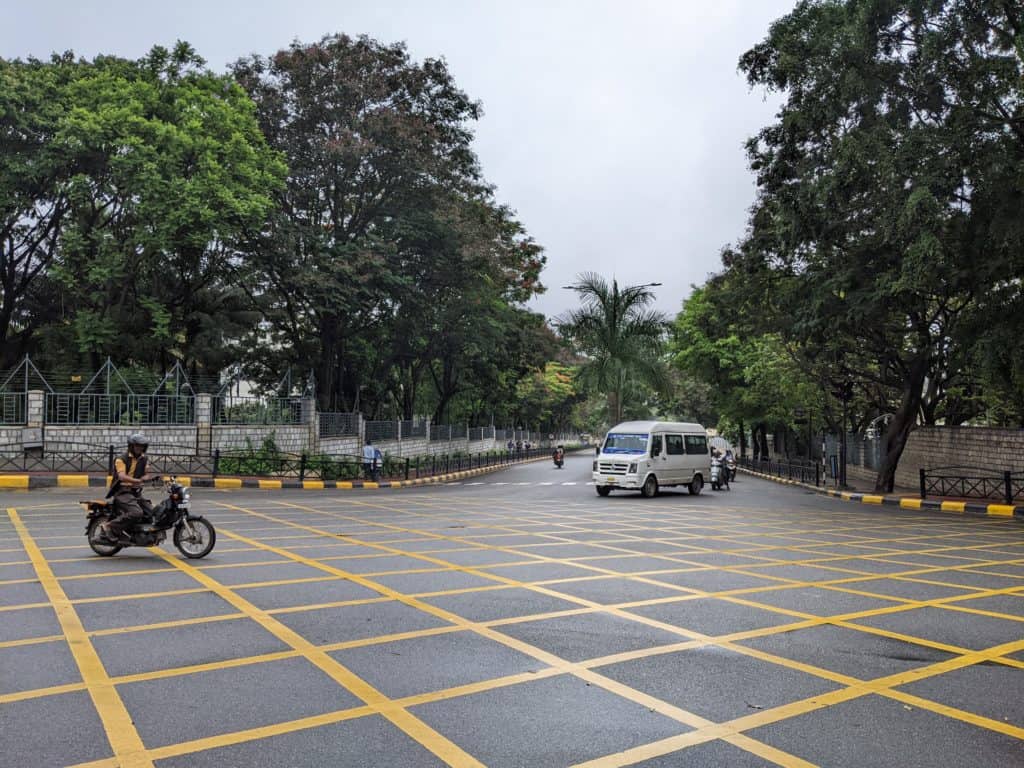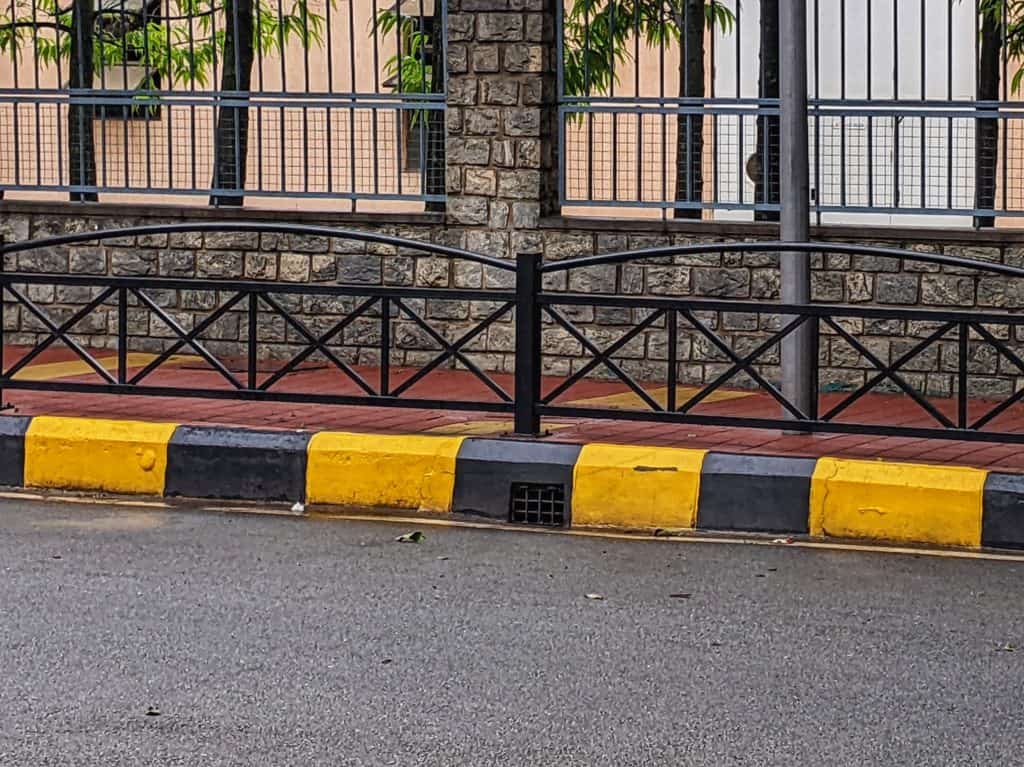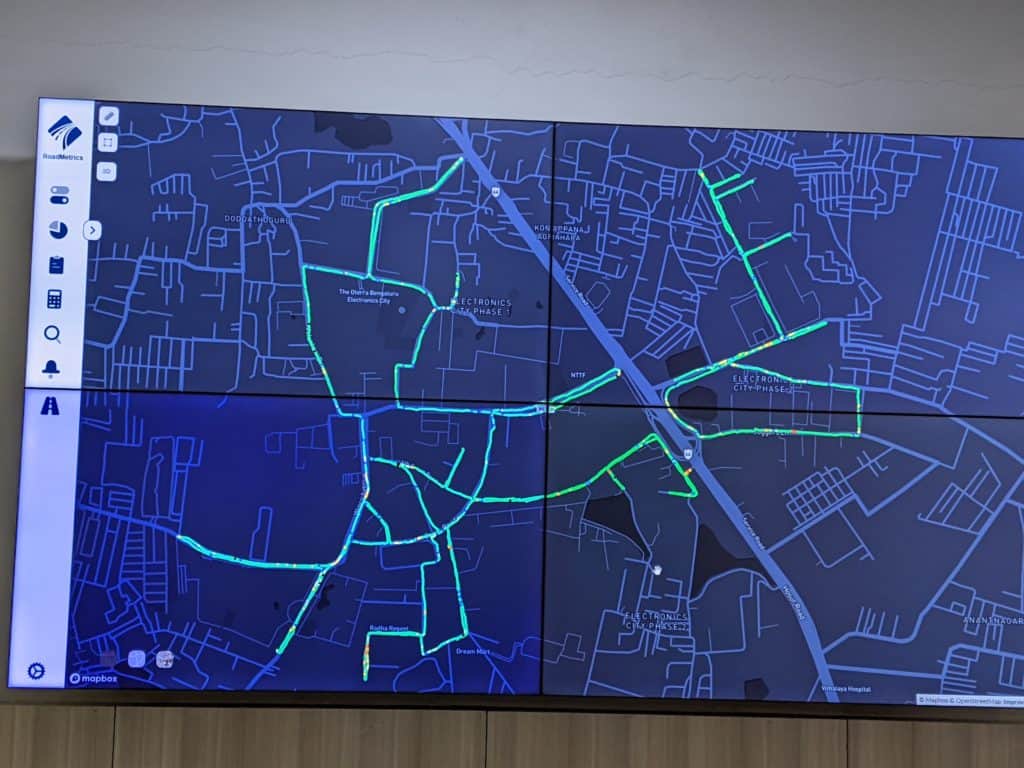Bengaluru has registered above-average rainfall to date. This also correlates with the washing away of road surfaces resulting in more potholes being exposed. The usual blame games then begin among the authorities.
However, there are parts of Bengaluru where this pattern rarely happens. One such area which has consistently bucked this trend of rains leading to potholes, and having good roads in general, is Electronics City – Specifically, the areas managed by the Electronics City Industrial Township Authority (ELCITA).
How does Electronic City ensure good roads?
As any urban planning expert would tell you, issues like poor drainage or bad roads are due to poor or no processes. And this is where ELCITA has managed to outperform its local body counterparts – by having set processes for road management.

Read more: How to get a good road in your neighbourhood
Starting with a good foundation
“The first roads in Electronics City West Phase were laid by L&T in 2002,” according to Lt. Col. Ravindra Singh, CEO of ELCITA. “The foundation was good as L&T studied the ground conditions properly before laying the road. However, some of the other roads we inherited were not good and took a lot more effort for restoration, but we ensured that they were relaid completely.”
ELCITA tenders the work of relaying road stretches as is the norm, through the Karnataka government’s procurement software. “We ensure clear specifications and expectations with the vendors,” says Ravindra Singh.
ELCITA engineers prepare regular Batch Reports (checking each batch of bitumen) to ensure quality parameters like the temperature of bitumen, percentage of bitumen in the aggregate and time when the bitumen was prepared are optimal. ELCITA’s engineers supervise levelling and rolling. Ravindra Singh points out one unique aspect of their process. “The contractor is considered more a partner than a vendor in the process of laying roads.”

Read more: How roads are built in Bengaluru. Or not
Tackling potholes at the source
The ELCITA team’s guiding principle is: that water is the biggest enemy of tar. So the process of maintaining roads starts with ensuring water does not stagnate and seep into the tar anywhere. To ensure this, the following steps are implemented.
- The drains in the area are cleaned regularly, particularly before the start of the rainy season.
- One of the primary causes of blocked drains is the dumping of garbage in them. Strict control is maintained to ensure no such dumping happens. Any stray dumping that might happen around shops is usually cleared soon as the drains are cleaned regularly.
- The drains were initially of stone slab construction, and have since been made deeper with better construction material. Recently, 75 rain-water harvesting pits were installed as part of the drain system. Thus instead of all the water in the drains flowing to rajakaluves, they also get discharged into the groundwater system. This increases the carrying capacity of the drains so that even during extremely heavy rainfall there is no stagnation on the roads.
- The roads are laid to specification and surfaces have gradients to ensure that water does not stagnate in the middle but flows to the sides where the drain inlets are. The terrain is also mostly inclined, preventing water from accumulating anywhere in the area.
- Any potholes that form are proactively tackled to ensure that water doesn’t accumulate in them. Allowing water to stagnate in potholes would make them wider and deeper with time.
I visited the area on a particularly rainy morning and while the roads leading up to Electronics City were pothole-ridden and filled with water, the roads in Electronics City itself were clear of any standing pools of water.

Fixing potholes when they appear
Bitumen, unlike concrete, is a material prone to erosion with wear and tear from usage, and potholes do form over time. ELCITA has a clear process for dealing with potholes. According to Ravindra Singh, “the most important thing about fixing potholes is proactive maintenance. The key is to regularly look for potholes and fix them. That way they can be fixed in their early stages which also ensures fewer potholes.”
ELCITA has partnered with a startup called Road Metrics which provides them with a detailed assessment of the condition of every stretch of their roads. The Road Metrics team drives through all roads in the township every fortnight in their specially-equipped vehicles. They geo-tag the entire route with colour codes indicating the condition of the stretches. Green would mean no defects on the stretch, yellow and orange mean wait and watch, while a deep red would be a defect needing immediate intervention. This data is available on ELCITA’s dashboard, and clicking on a red or orange dot will pull up a picture of the defect on the road, which they can then work on immediately.



For filling potholes, ELCITA has their own in-house team of engineers. “It is cheaper and quicker to fix potholes in-house than raise a separate tender,” says Ravindra Singh. “This also gives us more control over the quality of work being done,” he adds. ”However, if the problems are deeper, we are willing to call in experts to seek solutions.”
What local bodies can learn from this
While Electronics City is a small 900+ acre area, hardly comparable to a body like BBMP’s 800+ square kilometres, there are learnings here. Ensuring pothole-free good roads is not rocket science. It requires a deep commitment to doing the basics right. In this case, it is about ensuring clean and functional stormwater drains and rajakaluves, and finding and fixing potholes as soon as they show up.
In fact, there are guidelines on how to design and lay roads set down by the Expert Committee headed by K N Shivashankar Rao, Chief Engineer (Retd) PWD, GoK, in 2009. It lays down in minute detail the processes to be followed to ensure durable roads, covering aspects of quality control in the construction process and maintenance steps necessary during the lifetime of the roads.
To repeat, it just needs getting the basics right which can go a long way in fixing issues like potholes and floods.
Dont agree to this article. Pls visit doddathogur n tech city lay out. Its worst than one can imagine. No official has shown any interest since last many years
Roads connecting to offices are pothole free but other road are worst. Check the road in golahalli or road connecting to Neo town it’s worst.
This is only in electronic City industrial area scene otherwise in ecity-2 there is only patholes no roads .
Please see neotown road near prestige sunrise connecting to Thirupalya there you will get lot of potholes. Only the main roads where IT companies are there are good.
Kindly check inside roads of Doddathogur , Electronic city. Then comment on infrastructure. Worst roads in the Bangalore.
While I agree that roads are better in Electronic City, but it is good only in the stretch where offices are located. Just visit the residential localities and you will find the differences. Shops are mostly located in residential areas apart from Neeladri Road. Not sure if those areas comes under ELCITA but we definitely expect roads in residential areas to be good as well.
The roads that are shown in the pictures are the roads ahead of the MNC. The roads that are beyond these companies are not properly maintained. Please do something for those roads as well.
Dear Sir,
Please check the road of bettadasanpura road.It looks like of road track or jungle road. Which is in Doddathogur.
Well managed roads and traffic including waste management in E city.It really shows how pathetically BBMP manages other parts of Bangalore. Proper planning, good governance and Responsible ward engineers can fix this problem. Corruption is one major issue where Contractors get away with sub standard work.
Please see the road in Electronic City phase 2, this quite opposite, pls develop phase 2 as well.
Completely disagree. This is only because ELCITA is maintaing it. The local panchayat has deaf ears to the residents once you enter Doddathogur. There are encroachments and loads of potholes.
Great achievement
ELCITA Professionally managed Authority. BBMP instead visiting Singapore etc.., spending foreign exchequer should visit ELCITA & learn their best practices.
Good artical. I also commute through these elcita Maintenaned roads they r kept pothole free all the time. So BBMP can take help of elcita n lay our city roads.
Where there is no / less corruption there is quality.
Look at National highways, the roads in Kempegowda international airport. All these roads don’t have potholes. Only the state roads are riddled with potholes
Have you ever been to Electronic City yourself?? The main road (Neeladri Road), in Electronic City, is a mess itself.
There are many pot holes in electronic city u just covered few good roads applied to a vast majority,in Neotown Rd where most than 7000 residents live condition of the road is too bad, covered with pot holes or no roads at all in few places,same applies to gollahalli road from shriram summit apartments towards the end
You come just near by road electronic City road area Doddathogur and even jigani Road then you post how the roads in Bangalore
I hope whoever wrote this article come into the interior roads of electric city
True they should come to neeladri road which is not even interior…this road contains only potholes…the writer may then publish a new article ” how electronic city is maintaining so many potholes consistently every year”
Come and see the phase 2 no proper road
Wonderful article, i seen Ecity personally and asked this question myself. How Elcita can maintain it so well like foreign countries, that no other city municipality in India can follow.
BBMP can lay good roads because if the roads lasts long then less money enters the authorities pocket as there will only be 1 tender. So they will make sure roads gets relaid continously.
Kudos to ELCITA. BBMP should learn on how things are managed. Even when the road repair work goes on, the area is neatly earmarked.
Please note: The interior roads of Doddathogur and other villages are NOT maintained by ELCITA. The Electronics City Township Authority is only in charge of the industrial township. This article is only about those roads – and this area does not have any residences.
For the other roads, the local panchayats are in charge. As per the Township Act, 30% of property tax collected by ELCITA goes to village panchayats.
Residents need to engage with the panchayat to get their roads fixed.